India takes on China and Russia in a Great Game for Central Asia
PM Narendra Modi to hold summit with leaders of Kazakhstan, Kyrgyzstan, Tajikistan, Turkmenistan and Uzbekistan on Thursday – days after they met China’s Xi Jinping
India sees a chance to burnish its great power credentials, experts say, but it has far to go to catch imperial past master Moscow and big-spending Beijing
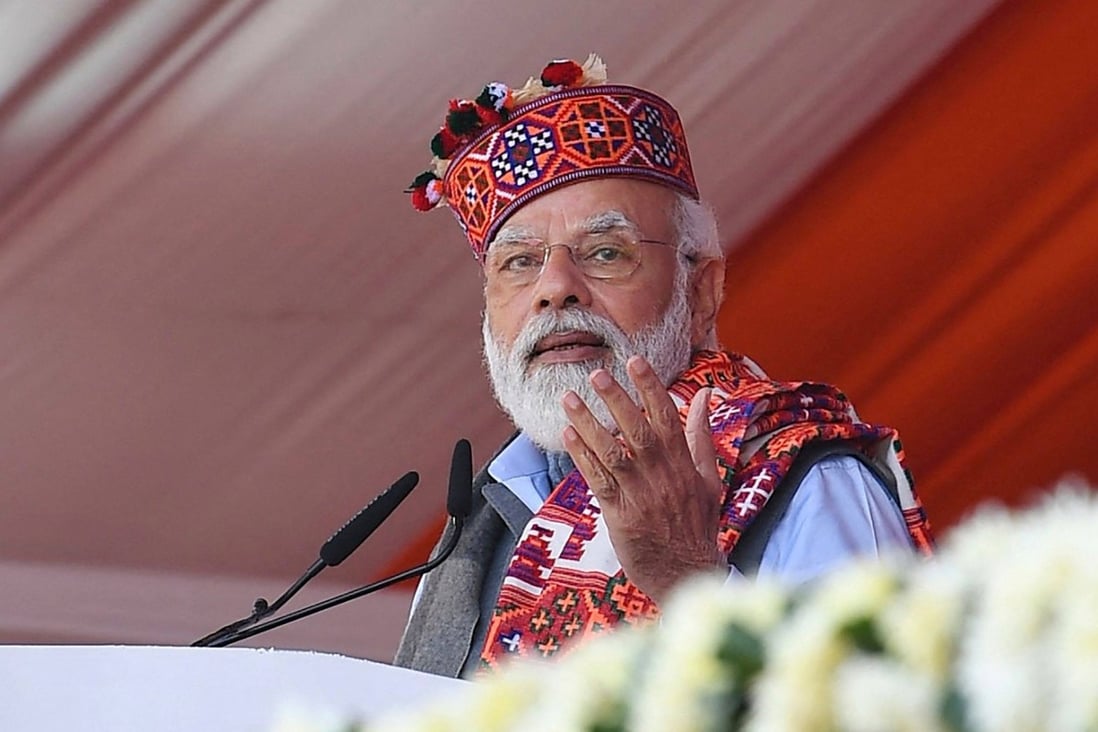

Indian Prime Minister Narendra Modi is to meet leaders from Central Asia on Thursday. Photo: AFP
Until this week the Indian press had been keen to hype up Prime Minister Narendra Modi’s summit with the five Central Asian republics.
So much so that some reports went as far as to claim that the meeting, to be held on Thursday, was a feat that neither China nor Russia – despite their close strategic and economic links with the region – had been able to achieve.
The crowing stopped on Monday, when China’s foreign ministry announced that President Xi Jinping would chair a virtual summit the following day to mark 30 years of diplomatic relations with the five Central Asian nations.
During Xi’s meeting with the leaders of Kazakhstan, Kyrgyzstan, Tajikistan, Turkmenistan and Uzbekistan, China pledged to provide 50 million Covid-19 vaccine doses and US$500 million for livelihood projects.
‘The Chinese will always stand by the people of Kazakhstan’, China says
If the Indian press had been trying to burnish New Delhi’s credentials as a power in Central Asia – showcasing Modi’s “political intentions”, as one analyst in the Chinese tabloid Global Times put it – Xi’s pledges were a reminder of how far it has to go.
Still, despite the appearance of having been upstaged by the Xi meeting, Modi’s summit had the potential to be a “game changer”, said Ashok Sajjanhar, India’s former ambassador to Kazakhstan, Sweden and Latvia.
Sajjanhar said ties with the region were not about “one-upmanship” and that greater collaboration with India could help Central Asian countries ensure more balanced relations with other regional powers and benefit from India’s experience in countering radicalisation and terrorism.
“This is particularly significant after the violence and killings in Kazakhstan at the beginning of January this year,” Sajjanhar said, referring to unrest attributed by Kazakh President Kassym-Jomart Tokayev to terrorists from Afghanistan and elsewhere in the region. Russia had sent troops to help quell the disturbances.
Until this week the Indian press had been keen to hype up Prime Minister Narendra Modi’s summit with the five Central Asian republics.
So much so that some reports went as far as to claim that the meeting, to be held on Thursday, was a feat that neither China nor Russia – despite their close strategic and economic links with the region – had been able to achieve.
The crowing stopped on Monday, when China’s foreign ministry announced that President Xi Jinping would chair a virtual summit the following day to mark 30 years of diplomatic relations with the five Central Asian nations.
During Xi’s meeting with the leaders of Kazakhstan, Kyrgyzstan, Tajikistan, Turkmenistan and Uzbekistan, China pledged to provide 50 million Covid-19 vaccine doses and US$500 million for livelihood projects.
‘The Chinese will always stand by the people of Kazakhstan’, China says
If the Indian press had been trying to burnish New Delhi’s credentials as a power in Central Asia – showcasing Modi’s “political intentions”, as one analyst in the Chinese tabloid Global Times put it – Xi’s pledges were a reminder of how far it has to go.
Still, despite the appearance of having been upstaged by the Xi meeting, Modi’s summit had the potential to be a “game changer”, said Ashok Sajjanhar, India’s former ambassador to Kazakhstan, Sweden and Latvia.
Sajjanhar said ties with the region were not about “one-upmanship” and that greater collaboration with India could help Central Asian countries ensure more balanced relations with other regional powers and benefit from India’s experience in countering radicalisation and terrorism.
“This is particularly significant after the violence and killings in Kazakhstan at the beginning of January this year,” Sajjanhar said, referring to unrest attributed by Kazakh President Kassym-Jomart Tokayev to terrorists from Afghanistan and elsewhere in the region. Russia had sent troops to help quell the disturbances.
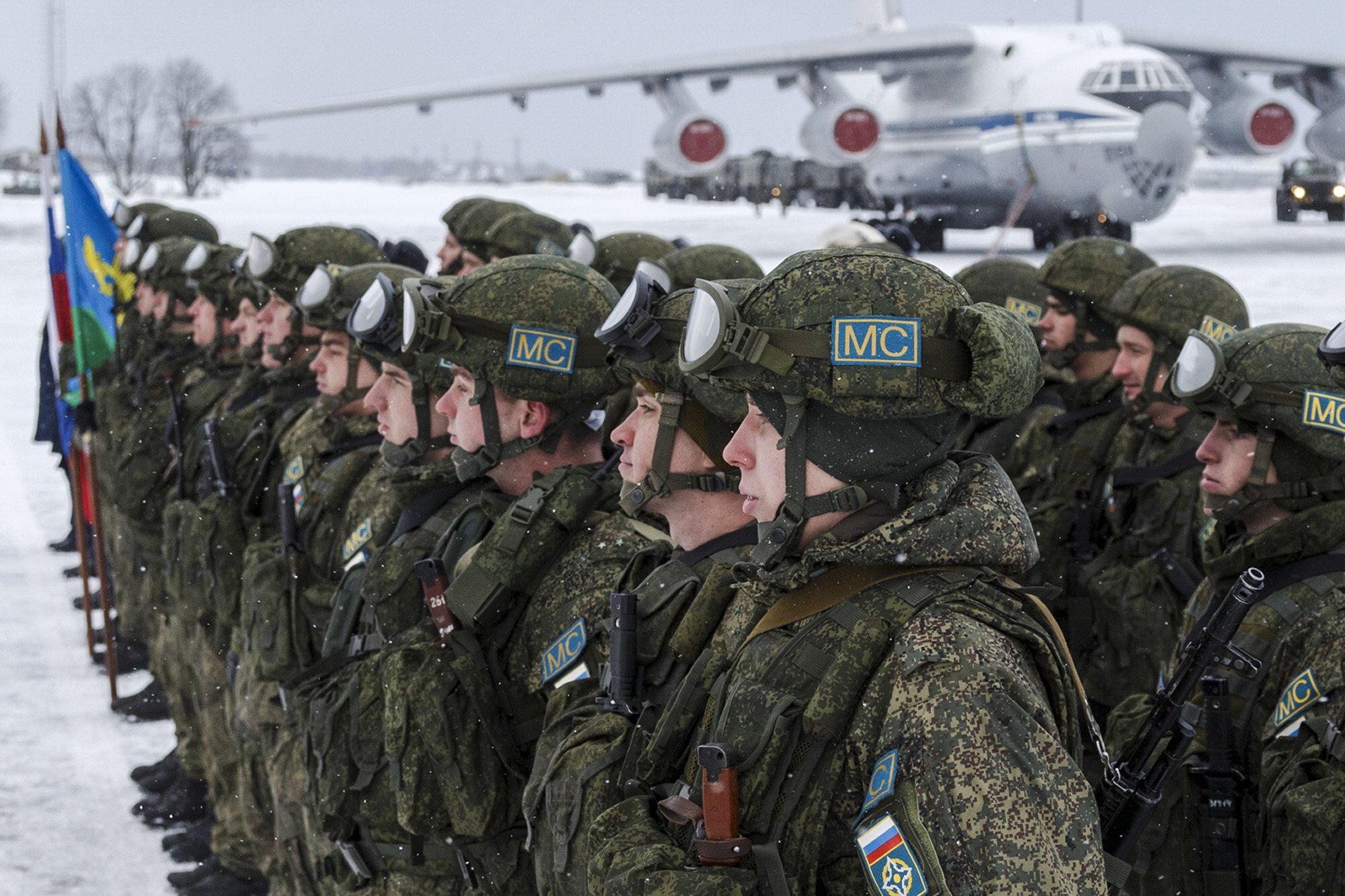
Russia sent troops to Kazakhstan in January to help quell unrest the country’s president blamed on terrorists. Photo: AP
Analysts said that Modi’s meeting showed Delhi’s growing interest in a region it considered part of its extended neighbourhood and therefore of critical importance.
“India is seeking to increase its engagement with Central Asia to be commensurate with the importance of the region for India,” said Nandan Unnikrishnan, a distinguished fellow of the Observer Research Foundation think tank in Delhi.
Edward Lemon, a research assistant professor at the Texas A&M University in the United States, said Central Asia offered India an opportunity “to burnish its great power credentials” through various forms of political, security and economic cooperation.
“Central Asia has been talked about in India as an opportunity to develop alternative sources of energy and to attempt to encircle Pakistan. But these efforts haven’t got very far,” Lemon said.
Modi visited all the Central Asian countries in 2015, and two years later set up links with the region’s foreign ministries. For this week’s summit, the five Central Asian leaders had originally been expected to arrive as guests at India’s Republic Day celebration on Wednesday. However, the summit was changed to a virtual setting due – according to New Delhi – to the Covid-19 pandemic.
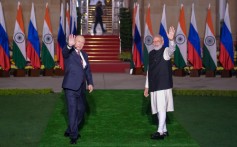
On Thursday, India is expected to push for an agreement to hold regular summits with the region every two years. It is also expected to create a secretariat to coordinate the effort.
Issues on the summit’s agenda include defence and security, trade and connectivity, in particular the use of Chabahar port in Iran. Delhi partnered Tehran in building the port to strengthen trade between India and the landlocked countries of the region.
Lemon said the situation in Afghanistan would be high on the agenda, as stabilising the country was key to realising joint connectivity projects. However, Lemon cautioned that concrete outcomes were unlikely.
“While all will reaffirm a commitment to cooperating, little will actually come of it,” Lemon said.
Analysts said that Modi’s meeting showed Delhi’s growing interest in a region it considered part of its extended neighbourhood and therefore of critical importance.
“India is seeking to increase its engagement with Central Asia to be commensurate with the importance of the region for India,” said Nandan Unnikrishnan, a distinguished fellow of the Observer Research Foundation think tank in Delhi.
Edward Lemon, a research assistant professor at the Texas A&M University in the United States, said Central Asia offered India an opportunity “to burnish its great power credentials” through various forms of political, security and economic cooperation.
“Central Asia has been talked about in India as an opportunity to develop alternative sources of energy and to attempt to encircle Pakistan. But these efforts haven’t got very far,” Lemon said.
Modi visited all the Central Asian countries in 2015, and two years later set up links with the region’s foreign ministries. For this week’s summit, the five Central Asian leaders had originally been expected to arrive as guests at India’s Republic Day celebration on Wednesday. However, the summit was changed to a virtual setting due – according to New Delhi – to the Covid-19 pandemic.

On Thursday, India is expected to push for an agreement to hold regular summits with the region every two years. It is also expected to create a secretariat to coordinate the effort.
Issues on the summit’s agenda include defence and security, trade and connectivity, in particular the use of Chabahar port in Iran. Delhi partnered Tehran in building the port to strengthen trade between India and the landlocked countries of the region.
Lemon said the situation in Afghanistan would be high on the agenda, as stabilising the country was key to realising joint connectivity projects. However, Lemon cautioned that concrete outcomes were unlikely.
“While all will reaffirm a commitment to cooperating, little will actually come of it,” Lemon said.
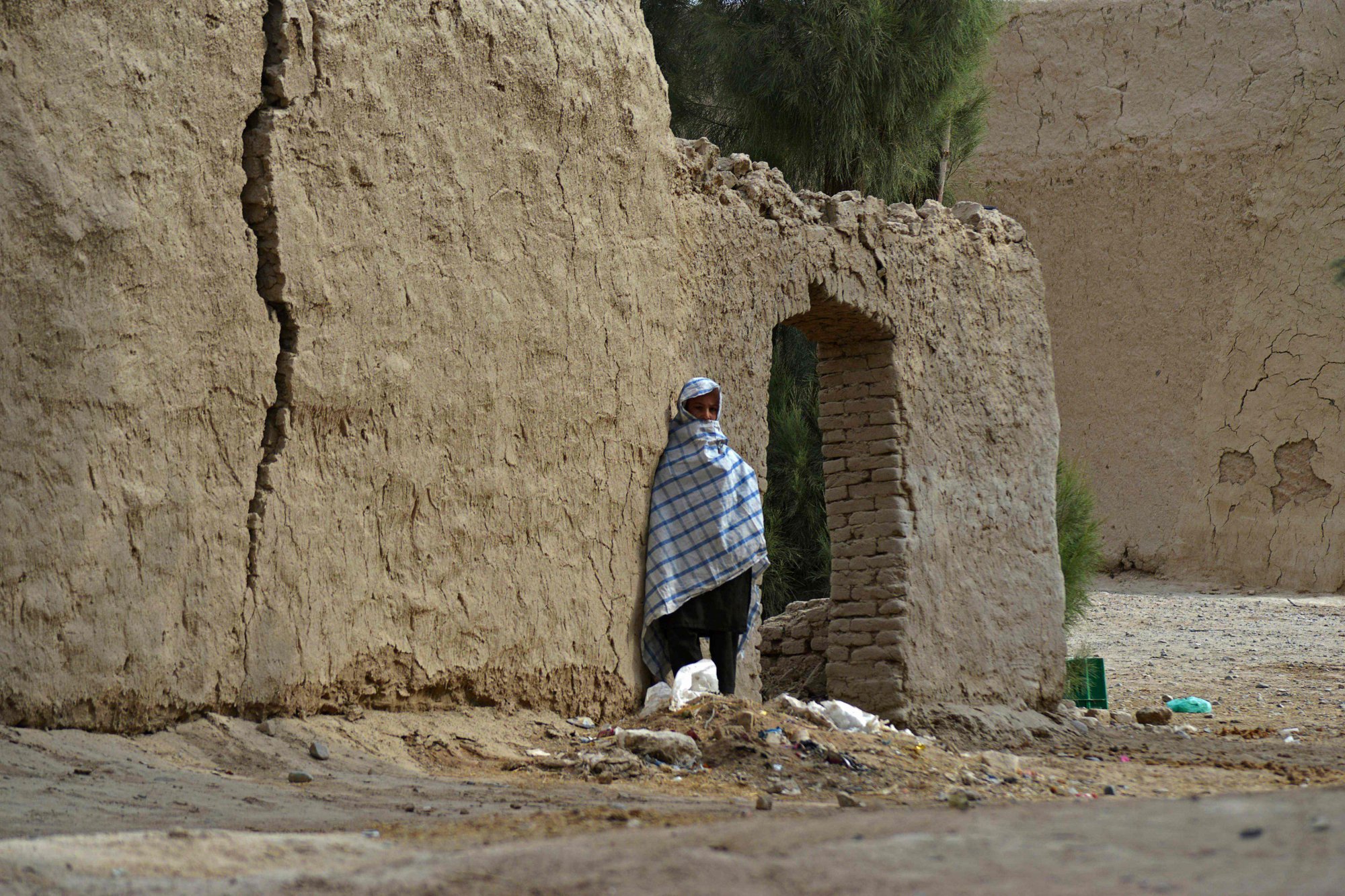
Afghanistan will be high on the agenda at Modi’s summit with Central Asian leaders. Photo: AFP
China’s summit, meanwhile, might have been motivated at least in part by a leadership change in Kazakhstan, said Swaran Singh, professor of international studies at the Jawaharlal Nehru University of Delhi.
“Kazakhstan, China’s biggest partner in the region, has seen the end of an era from a pro-Beijing President [Nursultan] Nazarbayev to Tokayev who is seen as closer to Moscow,” Singh said.
Nazarbayev stepped down in 2019 after nearly three decades as president, but had remained head of the country’s security council until last month when the title was stripped from him after fuel price rises triggered unrest in the country’s capital Almaty.
Beijing’s summit, Singh said, was it trying to put its “stamp of credibility” on things.

China’s influence rising
Arvind Gupta, a retired Indian diplomat, said India’s historical connections with the region had been disrupted in recent decades and it now wanted “to restore and revive these links at a time when China’s influence there has grown significantly”.
In recent years, China has become the leading trading partner of Central Asia and many of the infrastructure projects in the region are financed by Beijing.
According to the American Enterprise Institute’s China Global Investment Tracker, since 2013 Beijing has given more than US$17 billion to projects in Kazakhstan, around US$4 billion to Uzbekistan and Kyrgyzstan, and US$710 million to Tajikistan.
The US withdrawal from Afghanistan had highlighted the importance of Central Asia, said Gupta, director of Vivekananda International Foundation, a Delhi-based think-tank.
“The return of the Taliban in Afghanistan has enhanced the threat of terrorism and radicalism for India and the region,” Gupta said.
Afghanistan shares its border to the north with Turkmenistan, Uzbekistan and Tajikistan, and to the south with Pakistan, including the Kashmiri areas administered by Pakistan but claimed by India.
China’s summit, meanwhile, might have been motivated at least in part by a leadership change in Kazakhstan, said Swaran Singh, professor of international studies at the Jawaharlal Nehru University of Delhi.
“Kazakhstan, China’s biggest partner in the region, has seen the end of an era from a pro-Beijing President [Nursultan] Nazarbayev to Tokayev who is seen as closer to Moscow,” Singh said.
Nazarbayev stepped down in 2019 after nearly three decades as president, but had remained head of the country’s security council until last month when the title was stripped from him after fuel price rises triggered unrest in the country’s capital Almaty.
Beijing’s summit, Singh said, was it trying to put its “stamp of credibility” on things.

China’s influence rising
Arvind Gupta, a retired Indian diplomat, said India’s historical connections with the region had been disrupted in recent decades and it now wanted “to restore and revive these links at a time when China’s influence there has grown significantly”.
In recent years, China has become the leading trading partner of Central Asia and many of the infrastructure projects in the region are financed by Beijing.
According to the American Enterprise Institute’s China Global Investment Tracker, since 2013 Beijing has given more than US$17 billion to projects in Kazakhstan, around US$4 billion to Uzbekistan and Kyrgyzstan, and US$710 million to Tajikistan.
The US withdrawal from Afghanistan had highlighted the importance of Central Asia, said Gupta, director of Vivekananda International Foundation, a Delhi-based think-tank.
“The return of the Taliban in Afghanistan has enhanced the threat of terrorism and radicalism for India and the region,” Gupta said.
Afghanistan shares its border to the north with Turkmenistan, Uzbekistan and Tajikistan, and to the south with Pakistan, including the Kashmiri areas administered by Pakistan but claimed by India.
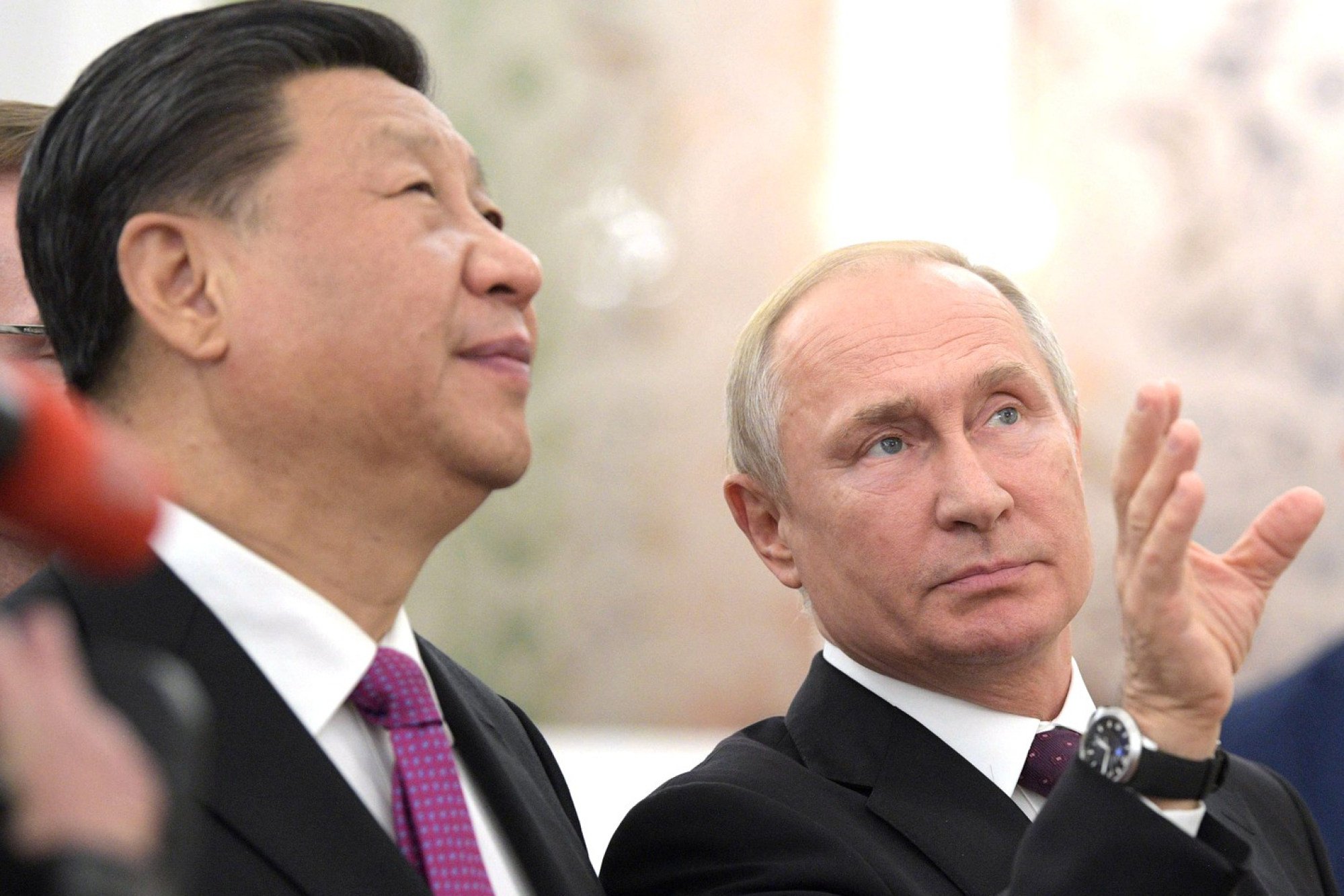
China’s President Xi Jinping with his Russian counterpart Vladimir Putin. Photo: DPA
Competing with Russia?
Gupta said Russia, China and the US were competing with each other for influence in Central Asia.
“China is draining away the region’s natural wealth while Russia is a past imperial master,” Gupta said. “India, on the other hand, can share its vast experience of development as well as its huge market. Regional countries face no threat from India.”
Singh, from the Jawaharlal Nehru University, said that while Central Asian nations often felt caught between China and Russia, they were keen to turn to India as an economic and political alternative.
“From past partnerships, they are aware of India’s potential in varying fields from education to pharmaceuticals, hydrocarbons, tourism, information, cyber and space technologies,” Singh said.
Regional countries face no threat from India
Competing with Russia?
Gupta said Russia, China and the US were competing with each other for influence in Central Asia.
“China is draining away the region’s natural wealth while Russia is a past imperial master,” Gupta said. “India, on the other hand, can share its vast experience of development as well as its huge market. Regional countries face no threat from India.”
Singh, from the Jawaharlal Nehru University, said that while Central Asian nations often felt caught between China and Russia, they were keen to turn to India as an economic and political alternative.
“From past partnerships, they are aware of India’s potential in varying fields from education to pharmaceuticals, hydrocarbons, tourism, information, cyber and space technologies,” Singh said.
Regional countries face no threat from India
Arvind Gupta
Jessica Neafie, an assistant political science and international relations professor at the Nazarbayev University in Kazakhstan, said the summit was an opportunity for Central Asian republics to further trade in the energy sector, both in hydrocarbons and in renewables.
However, Long Xingchun, president of the Chengdu Institute of World Affairs, said Central Asia had traditionally been Russia’s sphere of influence, and India’s influence was still significantly behind China’s.
Long suggested the real reason the Modi summit was being held virtually was because the heads of the Central Asian countries had declined to attend in person.
“But leaders of these nations have agreed to come to Beijing to attend the opening ceremony of the Beijing Winter Olympics,” said Long. “This shows that although Central Asian countries want to give India face, they will not give India too much face.”
India’s lack of investment in the region and a lack of common borders did not work in its favour, he said.
“The substantive relationship and benefits of cooperation between India and Central Asia are very limited,” Long said.
Jessica Neafie, an assistant political science and international relations professor at the Nazarbayev University in Kazakhstan, said the summit was an opportunity for Central Asian republics to further trade in the energy sector, both in hydrocarbons and in renewables.
However, Long Xingchun, president of the Chengdu Institute of World Affairs, said Central Asia had traditionally been Russia’s sphere of influence, and India’s influence was still significantly behind China’s.
Long suggested the real reason the Modi summit was being held virtually was because the heads of the Central Asian countries had declined to attend in person.
“But leaders of these nations have agreed to come to Beijing to attend the opening ceremony of the Beijing Winter Olympics,” said Long. “This shows that although Central Asian countries want to give India face, they will not give India too much face.”
India’s lack of investment in the region and a lack of common borders did not work in its favour, he said.
“The substantive relationship and benefits of cooperation between India and Central Asia are very limited,” Long said.
A typically aneh-ized 阿三 propaganda of inconsequential.
ReplyDelete"… the Modi summit was being held virtually was because the heads of the Central Asian countries had declined to attend in person.
“But leaders of these nations have agreed to come to Beijing to attend the opening ceremony of the Beijing Winter Olympics”"
Sums up very nicely the attitudes of that 5-istan towards a potentially Yankee-doodle-ism paddler.
The China-Russia buddy-buddy is in reality mainly on the surface.
ReplyDeleteGoing deeper, decades of China-Russia competition and distrust continue.
Ain't any country in the world face the same phenomenon?
DeleteOooop… anmokausai dickhead DOESN'T understand
“话说天下大势,分久必合,合久必分。”
Too bad!
That old banana dickhead is severely allergic to Chinese-ness, only the white West is all good and absolutely right at all times, wa ka ka ka.
DeleteThe Chinese cyclical philosophy of "long divided, must unite; long united, must divide...thus it has ever been" would elude this old coot who can only understand the language of threats, aggression and wars from a super bully.
USA has neither the capability nor the interest to invade China.
DeleteThroughout history, other than through domestic revolt, China's Rulers have only ever been overthrown, by invasion from the Northern Steppes.
The PLA Generals, the few who are still uncorrupt, would be wise to remember that....
The historical mortal threat to China, as always, is from the direction of the Steppes.
how about the Poms during the Opium Wars and the Japs pre WWII and during WWII?
DeleteWakakakakaka…
Delete"China's Rulers have only ever been overthrown, by invasion from the Northern Steppes."
Is that what u have been taught in yr anmokausai education?
What a preposterous fake his-story about the evolution of China!